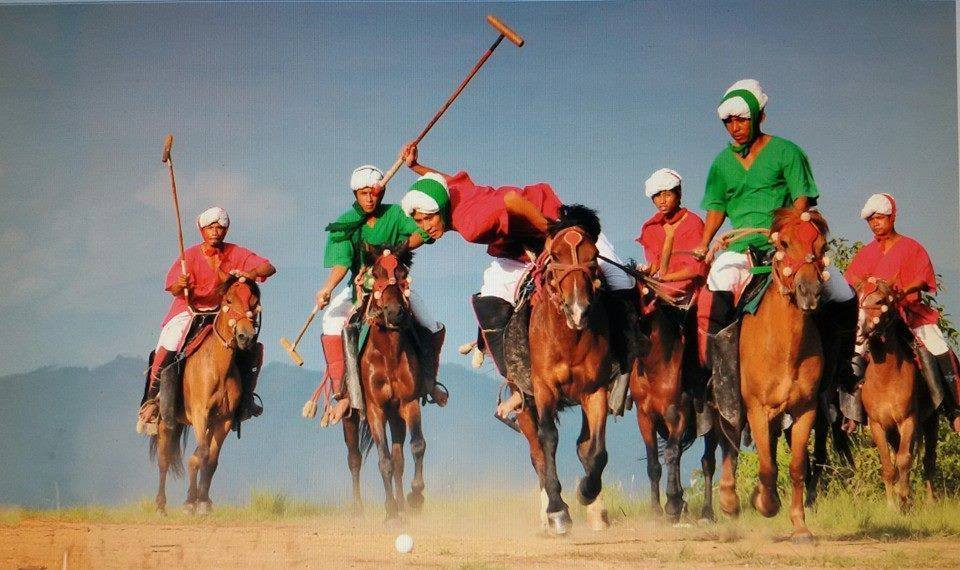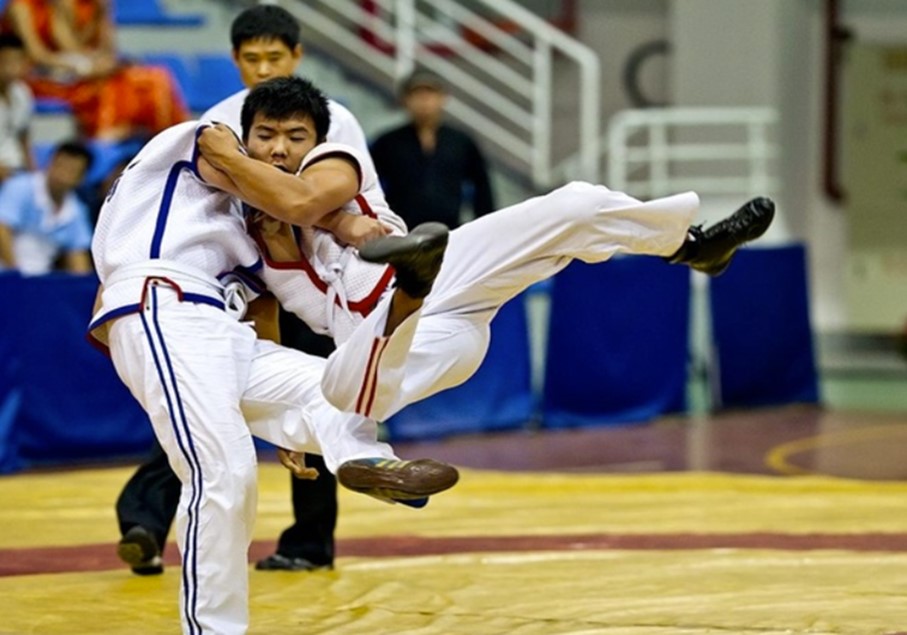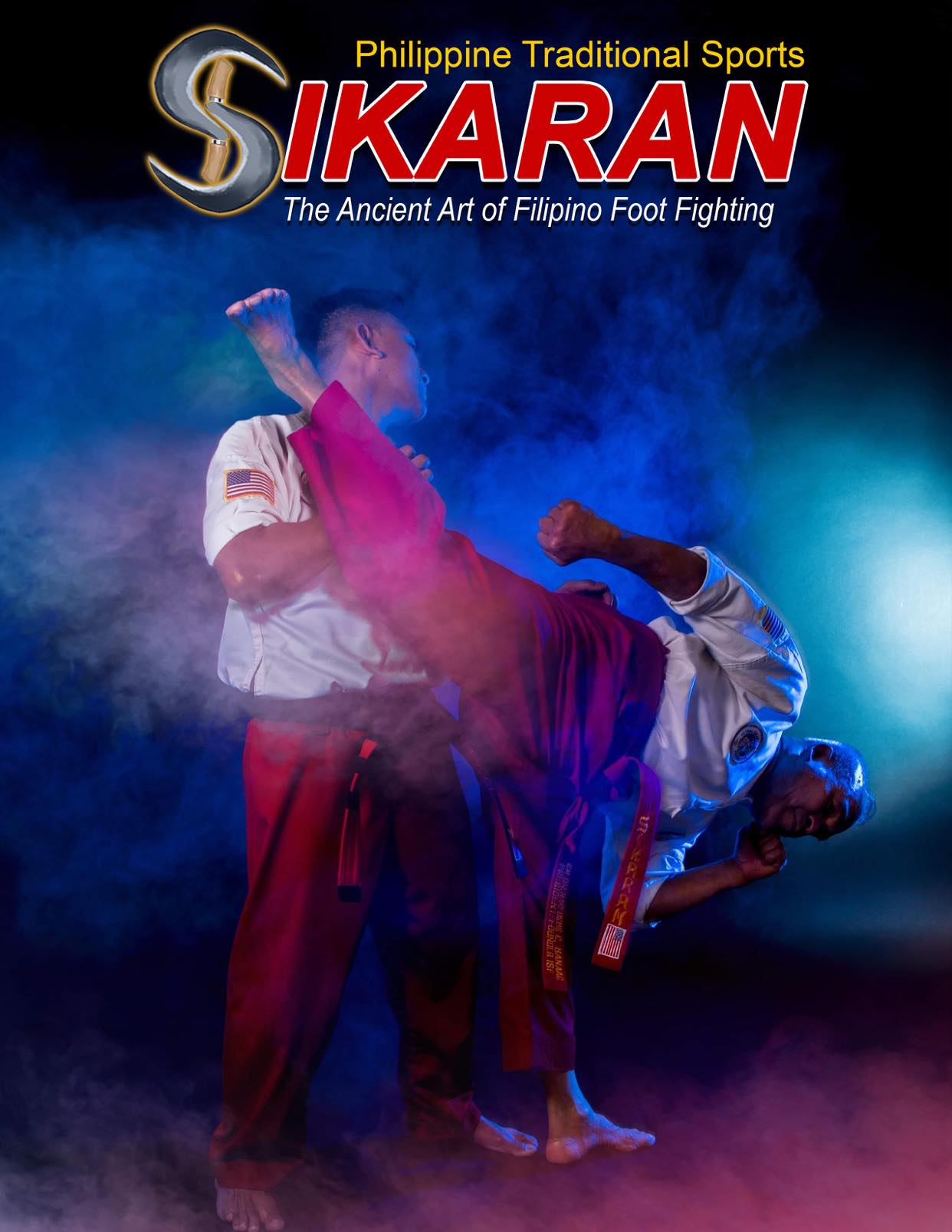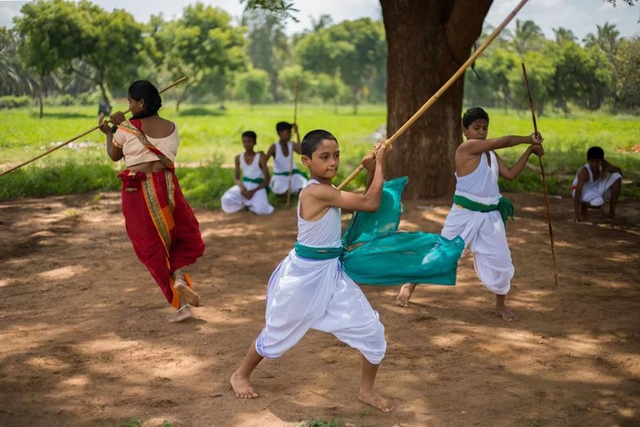- Name of sport (game): Psarani pata
- Place of practice (continent, state, nation):
India
- Name of sport (game): Qianghuapao (China)
- Description:
Firework-snatching, known in China as Qianghuapao, is a traditional sport of many ethnic groups including the Zhuang, Miao and Dong. The traditional way of playing is to launch a firework into the air and young men compete to get it. The arena could be any places, even ponds, cliffs, and so it is called a "game of brave guys". But the game has been improved into a new style, similar to American football, spanning 40 minutes in two 20-minute halves, with a ten minute break. The firework has been replaced by safer rubber disc with a diameter of 15 cm.
- Name of sport (game): Sagol Kangjei
- Place of practice (continent, state, nation):
India, Manipur
- History:
Modern-day polo originated within the small northeast Indian state of Manipur in 3100 BC, where it was played as sagol kangjei (sagol means pony and kangjei is a game of sticks). Thanks to a long and colorful history, polo in Manipur isn’t just a sport, it’s a way of life and an integral part of the state’s culture. The Manipuris have had a close relationship with the ponies since time immemorial.
Manipur has polo not just among the mortals but also has Marjing, who is considered the God of polo and features a pony as his carrier. Moreover, the Lai-Haraoba festival of the state depicts the life and times of Khori-phaba, the polo-playing god of sports. Ergo, these facts indicate that the sport has roots in the state from ancient times and the royal families of Manipuri played an important part in popularizing the sport. Taking every fact under consideration, Manipur brought noticeable change to the sport, and definitely, it’s a sports paradise.
Sagol Kangjei was never a game of the kings in Manipur; it was a king of the games played by ordinary people. Unfortunately, unplanned land-use and urbanization during the last half a century have robbed the Manipur pony of its natural habitat and the polo teams of their playing grounds. It’s become exorbitantly expensive to maintain a polo team and increasingly difficult to seek out a suitable ground to play regular matches. It’s during this context that documentation on Sagol Kangjei and its substantial contribution to modern polo is going to be of immense significance.
Source: https://anand-shinde.xyz/manipur-sagol-kangjei-the-origins-of-modern-day-polo/The origins of polo in Manipur are associated mythologically with Marjing, the God of the Chenglei tribe, to whom a structure similar to the ancient polo stick along and a ball are still offered in worship. It’s steeped so deep into the culture and folklore of Manipur that sequences in festivals are dedicated to the game – one of the most prominent examples would be the Lai Haraoba Festival in which there is a sequence dealing with the search of bride (Lai Nupi Thiba) on the part of Maibi (Priestess) with the Polo stick in hand.
Polo also finds its place in the literature which originates from that period, with several mythological books of Manipur like ‘Thangmeirol‘ and ‘Kangjeirol’ making references to the game.
According to ancient Meitei manuscripts like Kangjeirol (which is a treatise on Manipuri Polo), king Kangba introduced Sagol Kangjei, that is the “Polo” game. It is believed to be one of the three forms of hockey that people indulged in back in those days, the two others were Khong Kangjie (field hockey) and Mukna Kangjie (this involved wrestling and hockey together). It is mentioned in the aforementioned manuscripts that during the Ukrong Hongba festival, Kangba dribbled a bamboo root club by his walking stick on the ground. Consequently, he ordered his subjects to play this game on horseback the next day. Accordingly, his subordinate officers and common people from the province were the first to play this game.
The name Sagol Kangjei, as it suggests, is derived from the name of the king Kangba wherein Sagol means horse or pony and Kangjei means Kangba’s stick. It was also referred to by other names like ‘Kanjai-bazee’ and ‘Pulu’.
There are also references to the game of Polo between the friends of Ngonda Lairen Pakhangba, who ascended the throne of Manipur in 33 AD in the Cheitharon Kumpapa (official royal chronicle of the kings of Manipur).
According to the same set of texts, king Khagemba of Manipur introduced the game of Pana Sagol Kangjei in 1606 in his territory. This game was supposedly played between the four Panas of higher status and also between the two Panas of lesser status.
Consequently, it is also believed that around 1697 AD, King Charairongba led a team of 10 against another team which had 100 players. Astonishingly though, the former emerged victorious.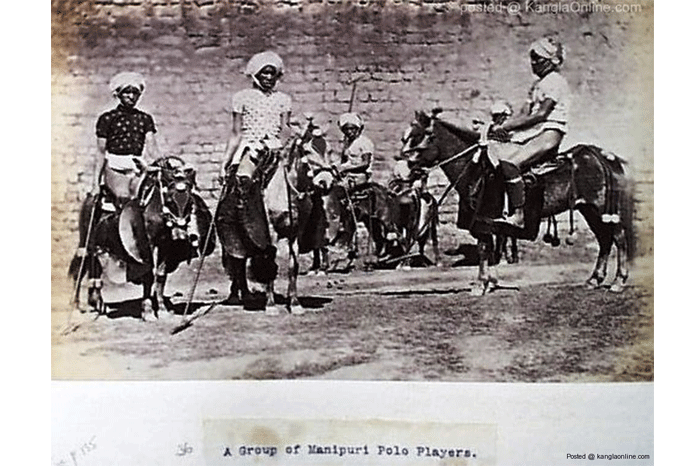 Source: https://homegrown.co.in/article/803205/how-polo-went-from-being-a-sacred-manipuri-game-to-an-elite-sport
Source: https://homegrown.co.in/article/803205/how-polo-went-from-being-a-sacred-manipuri-game-to-an-elite-sportIt was the 19th century, after the Sepoy Mutiny of 1857 that Joseph Sherer, a lieutenant in the Indian Army, was posted to Assam’s Cachar. It was in Silchar that he was first introduced to the game. The enthusiasm exhibited by Sherer has been described as exemplary. It is said that the Raja of Manipur explained to Sherer that Manipuris had been playing the sport for more than two thousand years. In fact, it was the aberration of one of the ancient names of the game -‘Pulu’, referring to the wooden ball that it was played with, that was adopted by Sherer and his contemporaries while popularizing the game in the West.
In 1859, Sherer – later acknowledged as the father of English Polo – set up the Silchar Polo Club with seven other founding members, namely, James Abernethy, Arthur Brownlow, James Davidson, Ernst Echardt, Julius Sandeman, A. Stuart and W. Walker. They indulged in weekly games with the locals, played in the traditional open spaces with small ponies. The first rules were formulated in 1863.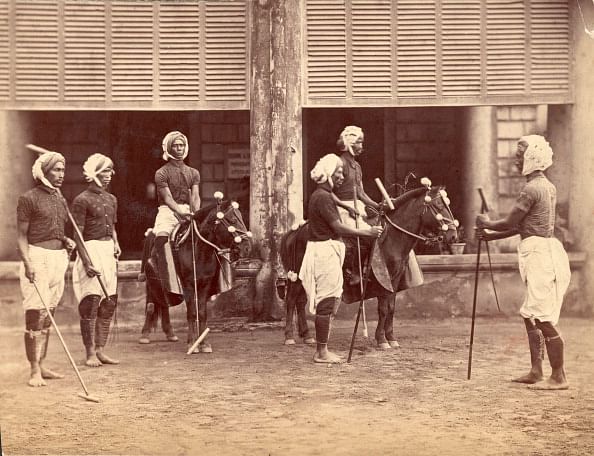 Source: https://www.sportskeeda.com/polo/from-sagol-kangjei-to-polo-recording-the-evolution-of-the-game-in-manipur
Source: https://www.sportskeeda.com/polo/from-sagol-kangjei-to-polo-recording-the-evolution-of-the-game-in-manipurIt is not surprising thus, that the oldest polo ground in the world is the Imphal Polo Ground.
The game expanded to other parts of the country after this, most notably to Kolkata and parts of erstwhile East Bengal. Subsequently the British took the game to their own country and in 1872, Captain Francis Herbert established the first Polo Club in England at Clytha Park, near Abergavenny.
Amongst other British people who reached out to Manipur to encourage the game was Lord Curzon, the then Viceroy of India who witnessed a match at the historic Imphal Polo ground in 1901. The game also finds a place in Curzon’s memoirs (The Viceroy’s Notebook).
Over the years, Polo has widely been acknowledged as a global sport, with more than 80 countries worldwide where the sport is currently played in. In fact it was also an Olympic sport from 1900 to 1936.
Source: https://www.sportskeeda.com/polo/from-sagol-kangjei-to-polo-recording-the-evolution-of-the-game-in-manipur - Description:
Teams consisting of 7 members each are a part of this game. Each player rides a pony of 4 to 5 feet in height. The field is rectangular in shape with dimensions of 210 yards in length and 100 yards in width. There is no goal post and the player has to hit the ball with the stick. The stick is made of cane having a narrow angled wooden head fixed at the lower end. The ball (the kangdrum) which is white in color is 14 inches in circumference and is made of bamboo root. Another important aspect which is widely believed is that the Meiteis Pony played an important role. It has a unique quality and without it, the game cannot be played.
Each player takes a specific position on the field which is as followed:
PUN- Ngakchun (Full Back)
PUN- Ngakchun (Half Back)
PULLUK (Left Wing)
LANGJEI (Centre)
PULLUK (Right Wing)
PUN JEN (Inne)
PUN-JENCHUN (Inner)
All the players wear a white dhoti which is tucked in above their knees and a head guard or a big white turban which is held by khadangchet that is a chin strap which protects their calvae. Usually, no footwear is worn and the ankles are covered khunningkhang which is a piece of leather cloth. Leg guards (khongyom) are worn below the knee.
Source: https://www.chaseyoursport.com/Indian-Sports/Sagol-Kangjei-The-Traditional-Manipuri-Polo/1070Rules:
(A). The GROUND is 300 yards long, 160 yards wide if boarded, 200 yards wide if unboarded. The goal posts are 8 yards apart.
(B). DURATION OF THE PLAY. The full game is 8 chukkas, but often in club matches 4 or 6 chukkas are played. Each chukka is timed to last 7 mins, then a bell is rung, but the game goes on until the ball goes out of play, or for another 30 secs when the bell is rung again, the chukka ends where the ball is. The clock is stopped between the umpire's whistle to stop the play and the whistle to start play (eg.ball out of play, foul etc.). There are intervals of 3 mins between chukkas and 5 mins at half time. Ends are changed at every goal scored - this has been found fairest when there is a wind.
(C). HANDICAPS. Each player is handicapped (on a 4-6 chukka basis) from -2 up to 10 goals (the top professional players). The aggregate handicap of the FOUR PLAYERS in a team is the team handicap. In handicap tournaments the number of goals start is obtained by multiplying the difference between the two teams' handicaps by the number of chukkas and dividing by 6, any fraction counting a half a goal.
(D). PONIES can play two chukkas in an afternoon with a rest of at least one chukka in between. There is no limit to the height of ponies.
(E). FOULS - (i). player following the ball on its exact line has the Right of Way over all other players. Any other player who crosses the player on the right of way close enough to be dangerous commits a foul. Penalties vary according to the degree of danger and closeness of the cross. (ii). No player may hook an opponent's stick unless he is on the same side of the opponent's pony as the ball. (iii). Dangerous play or rough handling is not allowed - a player may ride an opponent off, but must not charge in at an angle.
(F). PENALTIES. The following penalties may be given. (i). A goal is given if the cross is dangerous or deliberate in the vicinity of the goal. The ball is then thrown in 10 yds in front of the goal without ends being changed. (ii). Free hit from 30 yds opposite the centre of the goal - defenders to be behind the back line and outside the goal posts but must not ride through when the ball is hit. (iii). Free hit from 40 yds, same conditions as (ii). (iv). Free hit from 60 yds. Defenders to be 30 yds from ball. (v). Free hit from the centre of the ground, none of the defending side to be nearer than 30 yds when the ball is hit. (vi).Free hit from spot where the foul took place, no defender to be nearer than 30 yds.Corners are not taken as in Association Football - instead, a free hit is given 60 yds from the goal from a spot opposite where the ball was hit behind the line, none of the defending side to be nearer than 30 yds.
Source: https://themanipurpage.tripod.com/history/sagolkangjei.html - Current status:
Practiced.
This is a seasonal game and is played in the month of Mera that is September to October and it ends in the month of Ingen which depicts the months of June and July. - Sources of information :
Articles
https://homegrown.co.in/article/803205/how-polo-went-from-being-a-sacred-manipuri-game-to-an-elite-sport
https://themanipurpage.tripod.com/history/sagolkangjei.htmlVideo
https://www.youtube.com/watch?v=xVau1Ex8C_U
https://www.youtube.com/watch?v=XcEjiEfNnog
https://www.youtube.com/watch?v=mssGe1RDTEYSource of photos in this article:
https://anand-shinde.xyz/manipur-sagol-kangjei-the-origins-of-modern-day-polo/
http://www.e-pao.net/epGallery.asp?id=16&src=Sports/IndigenousGames/SangaiFestPanaKangjei20131128_2
https://www.chaseyoursport.com/Indian-Sports/Sagol-Kangjei-The-Traditional-Manipuri-Polo/1070
https://www.sportskeeda.com/polo/from-sagol-kangjei-to-polo-recording-the-evolution-of-the-game-in-manipur
https://homegrown.co.in/article/803205/how-polo-went-from-being-a-sacred-manipuri-game-to-an-elite-sport
https://www.manipuronline.in/about/sports
https://www.thehindu.com/news/national/other-states/manipur-gets-back-on-the-horse/article30770325.ece - Gallery:
- Name of sport (game): Saïs
- Place of practice (continent, state, nation):
Kazakhstan
- Sources of information :
Video:
https://www.youtube.com/watch?v=2MyTJopbo4YSource of photos used in this article and gallery:
https://pl.pinterest.com/pin/479844535290647934/ - Gallery:
- Name of sport (game): Shuai Jiao
- Name in native language: Chinese: 摔跤 or 摔角; pinyin: Shuāijiāo
- Place of practice (continent, state, nation):
China
- History:
Shuai Jiao (Chinese Wrestling) is the most ancient of all Chinese martial arts with a history of over 4,000 years. Its first recorded use, in a military engagement, was when the Yellow Emperor of China fought against the rebel Chih Yiu and his army, 2,697BC. They used horned helmets and gored their opponents while using a primitive form of grappling. This early style of recorded combat was first called Jiao Ti (butting with horns). Throughout the centuries, the hands and arms replaced the horns while the techniques increased and improved. The name Jiao Ti also changed and was referred to by many names popular at that time in history or by government decree.
The original Chinese Martial Arts, a combat wrestling system called Jiao Li (Strength and Endurance Skills), was systematised during the Zhou Dynasty (1122-256 BC). This military combat wrestling system, the first combination of fighting techniques historically employed by the Imperial Army, consisted of throws, hand and foot strikes, seizing joints, attacking vital parts and breaking joints in context of throwing. All of these elements of fighting skills were practised in training during the winter months and used in hundreds of battles in ancient China. It is the root and the foundation of Chinese martial arts. Used primarily in military engagements, Jiao Li gradually became a sport in the Qin Dynasty (221-207 BC) during the reign of the Emperor Shi Huangdi. Even as a sport practiced on the Lei Tai (Sparring Platform) exponents would aim to prove that their skills were superior to that of their opponent. Only the very best of Jiao Li exponents proven in battle and on the Lei Tai would be selected to become bodyguards to the Emperor. As the martial arts of choice for the Emperor’s bodyguard, Shuai Jiao was also considered to be the most effective of the Chinese fist styles. Over many centuries the art was taught to the Imperial Military. And in this century is taught in the police and military academies of China and Taiwan (ROC). Shuai Jiao embodies the principles of both Internal and External styles and the vast majority of martial arts have their roots in Shuai Jiao.
In ancient times, practitioners of Shuai Jiao competed against one another bare-chested, in modern times training is undertaken in a heavy quilted canvas cotton jacket. One important point is that Shuai Jiao does not depend on the opponent’s jacket or clothing in order to throw them. The priority is to grab the muscle and bone through the clothing in order to control and throw the opponent. The use of the competitor’s jacket, that has short sleeves above the elbows and the jacket itself wraps tightly around the torso with a canvas belt, adds variety of techniques in controlling and throwing the opponent. Fast footwork using sweeps, inner hooks and kicks to the opponent’s leg are combined with the controlling-striking arms that create a two directional action making a powerful throw. Chinese martial arts pants and wrestling boots are usually worn, but bare feet are acceptable for the novice.
There are many other major styles of Shuai Jiao: Beijing; Tian Jin; Mongolian (Boke); and Bao Ding which is also referred to as Kuai Shuai (Fast Wrestling). There are diverse types of wrestling indigenous to the minority groups in China such as the Uighurs in Sinkiang and Yis in Yunan province. Most of the Shuai Jiao practitioners in the late Qing Dynasty were based in the Northern China; until the establishment of the Republic of China 1911, when the art was then introduced to Southern China.
Famous masters of the late Qing early Republic of China are: Ping Qing-I, Chang Feng-Yen, Pai Chun-Feng, Ku Jui-Nien, Man Lao-Ming, Shih Lao-Chin, An Lao-Hua, Wu Szu, Shan Tien-Pao, Li Jui-Tung, Chu Kuo-Chen, Wang Tzu-Qing and Ma Liang. They followed by the well known figures of modern Shuai Jiao: Chang Tung-Sheng, Chang Tung-Ju, Chang Tung-Po, Chang Tung-Chi, Yen Shan-I and Ma Wen-Kuei of the Bao Ding style; and Shen San, Yang Chun-Hen, and Pao Shan of the Beijing style; and Mu Hsiang-Kuei, Lui Shao-Tseng and Pu En-Fu of the Tian Jin style.
When the Nationalist Government established itself on Taiwan (ROC) in 1949, a few champions of Shuai Jiao migrated to Taiwan (ROC) and introduced Shuai Jiao. The most famous Master was Chang Tung-Sheng, others recognised Shuai Jiao Masters are: Jeng Hsing-Ping, David Lin, Chi-Hsui Daniel Weng (USA), Li Wing-Kay (Brazil), Yuan Tzu-Mou (France), Hwang Ching-Zeng (Germany), and Luis Lin (Sweden). These Masters have been responsible for promoting Shuai Jiao overseas to Europe, the United States and South America. The next generation includes Masters: Chang Da-Wei (Taiwan ROC) – the grandson of Chang Tung-Sheng – Rob Simpson (United Kingdom), and Antonio Langiano (Italy).
Modern Shuai Jiao evolved from an ancient form of battlefield combat. Its techniques are the culmination of tested grappling experience in the best environment – the battlefield. This practical and devastatingly efficient method of combat has evolved into a sophisticated and effective – no nonsense – system of martial arts. Its philosophy shares the same principle of internal systems of Chinese martial arts: Yin and Yang. In fact, the advanced Shuai Jiao practitioner utilises both Internal and External principles and views these principles as two sides of the same coin meeting at a junction, and complimenting each other, but coming from totally different origins. In modern times Shuai Jiao Masters are employed by the police and military of a number of nations across the world including China and Taiwan (ROC). So even today, Shuai Jiao’s effectivness as a martial art is still being proven, in both close military combat and the street.
Source: http://traditionalwingchun.com/twckf/history-of-shuai-jiao/ - Description:
The first combination of combat techniques historically used by the Imperial Army consisted of throws, arm and leg strikes, joint steals (knees, wrists, elbows), attacks on strategic body parts, and joint breaks and throws.
The footwork of the undercuts, internal hooks and kicks to the opponent's legs are combined with the controlling striking punches of the arms, resulting in a two-way action. The result is the opponent's throw.
Nowadays, training takes place in heavy quilted outfits made of cotton canvas. Using a player uniform that has short sleeves above the elbows and the caftan itself wrapped tightly around the torso with a cloth belt provides many techniques for controlling and throwing the opponent.
Source: https://grapplezilla.com/shuai-jiao/The priority is to take the opponent down whilst standing over them. You may even get points deducted if you secure a takedown yet touch your hands on the floor in doing so. Basically, the idea is to floor the opponent without entering the ground yourself.
Another distinct aspect of the art is the use of leg grabs.
The way break falls are taught in Shuai Jiao it is different than in Judo, here you almost curl up into a ball before hitting the ground. This is due to training originating on a hard floor which changed the way in which break falls were thought about. Thousands of years later, and they are still taught in their own, distinct style.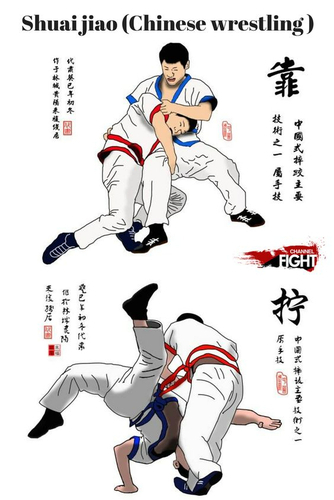
Source: https://pl.pinterest.com/pin/215539532150596748/Rules for Shuai Jiao - source: https://www.wfmaf.org/en/championship/competition-rules/shuai-jiao/
General Rules
• The Age Limit for Shuai Jiao is 18 – 45 yrs.
• If there are less than 2 competitors in an age group, the judges reserve the right to combine age groups.
• Mandatory Safety Equipments: Shuai Jiao Jackets, wrestling shoes (all other soft soled shoes subject to approval), long pants, and support cup
• Unless competitors already have their own uniform and equipment, the tournament will provide: Shuai Jiao Yi (Jacket) and Shuai Jiao Dai (Belt) to indicate Blue or Red. The contestants should also wear: Shuai Jiao Kuzi (martial arts trousers) the preferred option is Blue trousers with a Red Stripe. Black martial arts trousers are also acceptable. The contestant should also wear Shuai Jiao Xie (Wrestling Boots) or martial arts shoes. The wearing of jewelry, piercings and other adornments is strictly prohibited.
• The format for the match will be continuous sparring. During the match time will be stopped for: offenses and warnings; uniform and equipment failure; and to seek medical advice.
• Weigh-in time is 8a.m. to 9:30a.m. at the Shuai Jiao ring. If a competitor missed the weigh-in time, weigh-in will take place at the time when the competitor is called to compete.Duration of Bout
• Each bout is 3 rounds; each round is 2 minutes with 30 minute rest in between each round.Allowed Styles
• All wrestling styles are welcome to participate under the Shuai Jiao rules
• Sambo, Mongolian, Freestyle, Greco-RomanAllowable Techniques
• Throwing, sweeping, takedowns, wrestling, standing grappling, and shoot techniques; use opponent’s jacket, belt, or limbs to execute allowable techniques.Illegal Techniques
• Strike the opponent with the head, digits, palm, fist, forearm, elbow, knee, shin or foot; bite, spit or gouge the opponent; attempt to dislocate the opponent’s joints; attempt to break the opponent’s bones; pull the opponent’s hair; pull the opponent’s trousers; pull the opponent down once thrown; continue to grapple on the area once the opponent has been thrown; stamp or stand on the opponent’s foot; use the hand or forearm to cover the opponents face; and block continuously (to a count of 5 seconds) without attempting any techniques.Divisions
• Competitors will be matched by gender, age and weight, in the first instance, to the following weight categories. If there are insufficient numbers to run a category (i.e. less than two contestants) then categories may be combined at the discretion of our judges.Scoring Points
• 1 Point
• Contestant remains standing whilst causing the opponent to touch down on the area with: a hand; an elbow; or a knee.
• Contestant throws/sweeps/takes down the opponent causing them to land on their back; and lands on top of the opponent’s torso.
• Contestant forces the opponent to step out of area. Opponent falls through his/her own imbalance.
• 2 Points
• Contestant remains standing while causing the opponent to touch down on the area with: one hand and one knee; both hands; both elbows; and/or both knees simultaneously.
• Contestant remains standing while effectively sweeping or throwing the opponent causing the opponent to land on his/her head, side, chest or bottom.
• Contestant effectively throws the opponent causing the opponent to land on his/her side or back; and remains standing.
• 3 Points
• Contestant effectively throws the opponent, causing the opponent to rotate through a minimum of 180 degrees and to land on his/her back, and constestant remains standing and balanced.
• No Points
• Both contestants fall simultaneously or leave the area without the use of recognized technique or acceptable countering or finishing technique.Competitors may use the following techniques: Shuai Jiao (throwing, wrestling and standing grappling); Kuai Chiao (fast throwing – shoot techniques); Da Shuai (open hand techniques to throw/sweep/take down); Na Shuai (joint manipulation to throw/sweep/take down); Dian Shuai (pressure point manipulation to throw/sweep/take down). The competitor may make use of the opponent’s jacket, belt, or anatomical handles to execute his/her technique.
Winning the Match
• The winner is determined by the highest score at the end of the two rounds. In the event of a draw the Executive Referee and Assistant Referees will meet with the Chief Referee to determine the winner based on the most technically active performance.Warnings and Penalties
• The Referee may give a private or public warning, or disqualify a contestant depending on the seriousness of a foul or offense.
• First Warning: no point penalty.
• Second Warning: one point penalty.
• Third Warning: disqualification.Weight Classes
• Men’s Featherweight: (145 lbs & Under)
• Men’s Lightweight: (146 – 155 lbs)
• Men’s Welterweight: (156 – 170 lbs)
• Men’s Middleweight: (171 – 185 lbs)
• Men’s Light Heavyweight: (186 – 205 lbs)
• Men’s Heavyweight: (206 lbs & Above)
• Women’s Lightweight: (125 lbs & Under)
• Women’s Welterweight: (126 – 135 lbs)
• Women’s Middleweight: (136 – 145 lbs)
• Women’s Light Heavyweight: (146 lbs & above)
• If there are less than 2 competitors in an age group, the judges reserve the right to combine age groups. - Current status:
The World Shuai Jiao Federation (WSJF) was formally establised in Langfang, China, on 27 August 2019. The induction was held in Langfang, China (just outside of Beijing) in the beautiful headquarters of the newly formed federation.
The founding 26 organizations representing were: Armenia, Bosnia & Herzegovina, Brazil, Canada, Chile, China, Chinese-Taipei, Colombia, France, Germany, Greece, Hong Kong, Japan, Italy, Malaysia, Netherlands, Paraguay, Peru, Poland, Russia, Serbia, Spain, Switzerland, Ukraine, United Kingdom, and United States of America.
The top WSJF leadership consists of President Wang Peng, China; Vice-President Da-Wei “David” Chang, Chinese Taipei; VicePresident Wing Kay Li, Brazil; Vice-President Chi-hsiu Daniel Weng, USA; and Secretary General Chenxu Zhou, China.
The purpose of the World Shuaijiao Federation is to inherit and carry forward the skills and culture of Chinese Shuaijiao and to promote the healthy and orderly development of the sport.The European Shuai Jiao Union (ESJU) was established in 2005 to promote and develop Chinese wrestling (Shuai Jiao) in Europe. The ESJU has grown to become the governing body for Chinese wrestling in Europe. The ESJU is governed by the ESJU Council and constitution.
The European Shuai Jiao Union (ESJU) was established and formally constituted in Oropesa, Castellon, Spain, on 12 June 2005. The ESJU founding member states are: France, Italy, Spain, Sweden and the United Kingdom. The ESJU have developed a programme management approach to the promotion and development of Shuai Jiao (Chinese Wrestling) in Europe: to ensure the effective delivery of its objectives. The ESJU is the official governing body for Shuai Jiao (Chinese Wrestling) in Europe, and is recognised by the international governing bodies based in the People's Republic of China and Taiwan (ROC). The official logo of the ESJU (pictured top left) is based on the flag of the European Union.
The ESJU is an a-political and non-profit making organisation. The Executive of the ESJU is the Council of the ESJU which is composed of the Presidents of each of the national Shuai Jiao unions, authorised to act on behalf of their union. The President of each national Shuai Jiao union is a resident in the country or region whose interests that they represent.
The ESJU is composed of national and regional Shuai Jiao unions from within Europe. Membership is restricted to those countries belonging to the European continent. Under the constitution of the ESJU, the European continent is bounded to the north by the Arctic Ocean to the west by the Atlantic Ocean to the South by the Mediterranean Sea and to the east by the Black Sea and the Ural Mountains. The only current exceptions to this definition are Iceland, Ireland, the United Kingdom and islands situated in the Mediterranean Sea. Applications for membership of the ESJU from countries determined to be outside this definition of Europe must be considered by the Executive Board of the Council of the ESJU.
Source: https://www.esju.org/about.html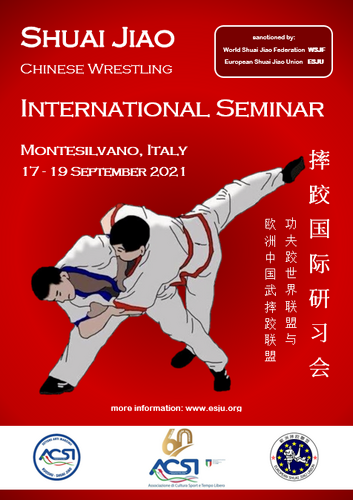

- Contacts:
World Shuai Jiao Federation (WSJF)
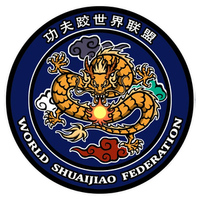
European Shuai Jiao Union
https://www.esju.org/
European Shuai Jiao Union
151 Strathmore Avenue
Luton
Bedfordshire
LU1 3QP
United Kingdom
Telephone: +44 1582 876700
E-mail:This email address is being protected from spambots. You need JavaScript enabled to view it. 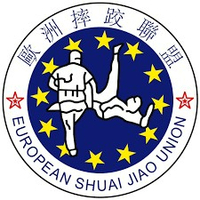
An example of a national federations:
Deutscher Shuai Jiao Verband e.V.
Website: www.shuaijiao.de
Fb: https://www.facebook.com/groups/shuaijiao.germany/
E-mail:This email address is being protected from spambots. You need JavaScript enabled to view it. 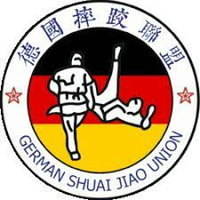
United States Shuai Chiao Association
Website: https://www.shuaijiao.org/
Fb: https://www.facebook.com/USAShuaijiao
E-mail:This email address is being protected from spambots. You need JavaScript enabled to view it.
Telephone +1 408-647-2400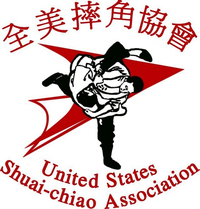
British Shuai Jiao Union
151 Strathmore Avenue
Luton
Bedfordshire
LU1 3QP
Website: https://www.shuaijiao.uk/
Email:This email address is being protected from spambots. You need JavaScript enabled to view it.
Telephone: +44 1582 876700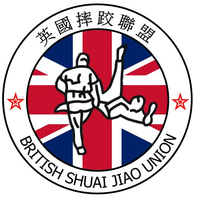
- Sources of information :
Articles:
History (in Polish) - http://www.neijia.net/neijia/shuaijiao_36.html
https://budodragon.com/what-is-shuai-jiao-the-chinese-grappling-martial-art/
https://thetaichinotebook.com/2022/04/03/shuai-jiao-fact-or-fiction/
http://traditionalwingchun.com/twckf/history-of-shuai-jiao/
https://www.wutai.co.uk/what-is-shuai-jiao/
https://grapplezilla.com/shuai-jiao/Video:
History of Shuai Jiao - Part One: https://www.youtube.com/watch?v=FWaH21x9o4o&t=39s
History of Shuai Jiao - Part Two: https://www.youtube.com/watch?v=XGJdH0_v_TY&t=13s
History of Shuai Jiao - Part Three: https://www.youtube.com/watch?v=hvp10xA-BCo&t=4s
https://www.youtube.com/watch?v=5E0OcUA6rv8&t=81s
https://www.youtube.com/watch?v=HEjkMbLyAzw
https://www.youtube.com/watch?v=5OywbhtBMi4
https://www.youtube.com/watch?v=0NQEOWmcDm4The information contained in the article comes from the following sources:
https://www.shuaijiao.de/en/shuaijiao-en/
http://traditionalwingchun.com/twckf/history-of-shuai-jiao/
https://www.wfmaf.org/en/championship/competition-rules/shuai-jiao/
https://www.esju.org/about.htmlSource of photos used in this article:
http://www.neijia.net/neijia/shuaijiao_36.html
https://www.esju.org/
http://www.shuaijiao-kuoshu.org/mondo.html
https://www.wutai.co.uk/what-is-shuai-jiao/
https://wojownicy-ulicy.pl/shuai-jiao-to-nic-innego-jak-chinskie-zapasy/
https://blackbeltmag.com/shuaijiao-chinese-grappling
https://swiatwalk.pl/shuai-jiao-chinskie-zapasy/
https://www.shuaijiao.uk/history.html - Gallery:
- Name of sport (game): Sikaran
- Place of practice (continent, state, nation):
Philippines
Today, Sikaran is fast gaining popularity worldwide and has been taught and played in various countries in Asia, Middle East, Europe and Africa. Its main headquarters is in the United States. - History:
THE ORIGIN OF SIKARAN By Hari Osias Catolos Banaag
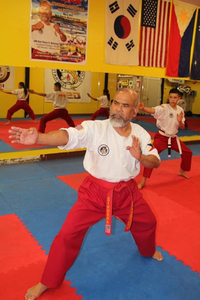
Sikaran is contact sports game, contest or tournament using both hands and feet to parry the attack of the opponent which is usually a strategic kick. Sikad is a Filipino root word for Kick thus Kicking used as an active Verb translates to Sikaran. This ancient sports was popular among the Farmers in the Village of Baras, Morong and Tanay in the province of Rizal east of Metropolitan Manila in the Philippines even before the Spanish Conquest of the Philippine Archipelago on March 16, 1521 when the Islands was discovered by Ferdinand Magellan. This sports uses both feet to gain points while the hands and arms are employed to parry the incoming foot blows.
The rich history of Rizal province traces Sikaran as an ancient game of Rice Farmers that was discovered from their daily routine farming activities to ease the boredom during their idle moments from their backbreaking work in the rice paddies. Youth farmers and farmhands were the first ones to play the game by kicking mud on the faces of their playmates using their feet eliciting much laughter and enjoyment whenever a tiny dirt lands on their target while other farmers watch from a distance.
Farmers from the Village of Baras, Rizal were credited as the first Sikaran initiators and players of the foot and mud game until the nearby Villages of Lagundi and Morong adopted it and called the game “Paninggara” in their vernacular dialect.
The game is usually played during the land preparation stage of rice farming when farmers would irrigate the barren farm to soften it up and prepare the area for plowing, harrowing and eventually planting the Philippine staple food. Rice paddies are submerged in ankle-deep waters for easy grubbing and plowing using farm animals such as Carabao (Water Buffalo), Cow and Horse to draw crude farming implements. The muddy area serves as a wide arena for playing before rice-transplanting, thus attracting the playful mood of youth farmers who engage in mud kicking. Early stories that were told and retold say that God-fearing people during those days do not have the courage to hurt others so much so that the game of mud-kicking would only limit them to hitting the clean clothing of their fellow farmer and that body contact that could hurt was always avoided. The one who has the soiled trousers are, therefore, the losers of the game although no scoring system was ever agreed upon then until such time when bigger chunks of mud could already be kicked to the direction of the body and would make one fall down.
As Sikaran evolved into a popular Farm Game more rules have since been mutually agreed upon by those who are interested to play it. Initially, a player who is hit by a big slice of mud in the body and fell down on the paddy loses until it was agreed upon that the player who fell three times loses the game, thus the early scoring system was already recognized by the players.
As the game gained popularity among the farmers, the kick style that was commonly used evolved into variations. These kicks were derived from the helpful farm animals. By constant day to day observation, the farmers learned that the frontal Carabao Kick was very strong and the “Tadyak-Kalabaw” came into the picture.
When the Carabao Kick (Tadyak Kalabaw) was already a popular kick, the farmers also observed that the Cow, of all Bovines, could kick sideward. This unique kicking characteristics of the Cow was carefully studied and included in the existing variety of styles in kicking mud. The farmers foot soles, during those days, were callous and wide as they wear no shoes nor slippers and would step barefooted over barren soils and grassy and muddy surface in those days. A bigger and wider foot, therefore, would give a Sikaran player the edge over an opponent who has a smaller feet. Soon after, they also discovered the powerful horse kick delivered backwards.
Interestingly, the three-point system was adopted from the popular Spider Quarrel wherein two Spiders of the same size would be pitted against each other using the broomstick (rib of the Coconut leaf). The spider that will fall from the stick three times loses.
The frontal stance of the players using the Carabao Kick ( Tadyak Kalabaw) remained as the most popular form and technique until the players learned to turn sideways to avoid being hit by the kicked while delivering a sideward or backward kick and at the same time parrying to counter. The forward and backward format of the game has since adopted the sideward technique.
The first tournament was called “Patas na Labanan” (Fair Game) wherein two players would play against each other. Since their playing techniques were limited to frontal and sideward kicks, they have since improved and developed a variety of turns and started using the horse-like backward kick. The first three major kicks learned from the main farm animals were, therefore, the most potential techniques that they have since develop to improve their skills. When during the early discovery of the game, players would only engage in frontal kick, they have since learned to turn sideways and could deliver the backward kick without necessarily turning in front. Players have also learned to employ several techniques to distract the attention of their opponent so that they could freely attack.
They have since developed the quick spider frontal attack, the Carabao kick (Tadyak Kalabaw), the cow sideward kicks and the horse backward kicks as the major elements in playing Sikaran. Accidents do happen that sometimes a player would be hit by a direct contact in the stomach whenever a back kick is delivered and the player who is hit would gasp for breath and fall. This contact has amazed the crowd. Over time, they have learned to develop more variations of the game which has already gained popularity province-wide until it eventually became a major attraction during big gatherings and celebrations of feast days. A native dance called Tinikling requires dancers to dance between two bamboo poles being clicked together. It would train dancers’ feet to be quick to avoid being caught in between the poles and help in the training of Sikaran Players.
The farmers who are focused in playing Sikaran would then go to the fields early in the morning to train how to kick mud using various techniques. They continued to research and observe the movements of their farm animals and have since become conscious in preparing their body condition preparatory to the game. Plowing the paddies and following the animal-drawn implement was a good foot and leg exercise/training as their feet and legs are submerged in knee-deep mud. They ate more vegetables and fruits to gain stronger bodies and maintain good health.
The primary industry of the inhabitants of Baras Rizal aside from Paddy Rice Farming and Upland Farming (Slash and Burn farming in the mountains called “Kaingin”) is Fishing along the Laguna De Bay, a large body of fresh water rich in marine resources. Baras Village is bounded by Barrio Lagundi. This adjacent village has since adopted Sikaran as their farm game and would often compete with Baras Players and meet to play the game at the different places in the Villages of Baras, in Pulo, Patadyang, Suro-Suro, Ulahan, Basud, Kalang Batong and Malalim- large farming villages with large rice farming paddies. Women have since caught interest in the game and have started competitive games of their own. Men have become more aggressive in playing with the entry of women in Sikaran competition.
Another game or competition in Baras during those days was the popular “Karera ng Bangka” (Boat Race) which eventually waned because not everybody could afford the cost of a boat and the river was so small for competition. It was not developed like the Sikaran.
Over the next decades, the “Patas na Labanan” (Fair Game) was developed with more innovations. The age, sex, body size (height and weight) was already considered as factors in Tournaments. The rules would include accumulation of body points. They do not use the three fall rule or the Spider Quarrel three-fall rule because players have since been quick to parry blows at the same time dodge incoming attack. The players changed the rules of the game and adopted a new point system.
A new variation of Sikaran has also emerged when the players agreed to a formal version of the game. The “Patas na Laban. This new variation will pit two players inside a circled area in the paddy. Whoever could land the first kick in the body and get out inside the circle three times his opponent wins. The player who gets out of the circle loses. The winner stays inside the circle and will be challenged by a woman player who will play outside the circle while the prior player is limited within the limits of the circle. Within a certain time, if the woman player fails to drive the player inside the circle outside , then the player inside the circle stays inside and will eventually be declared Champion. But there were also women who fight men inside the circle and eventually win. These women-players have become the inspiration of men.
Then the variation of “Labo-Labo Matira Matibay na Labanan” (Mix up, the toughest Rules) was also played. This was played inside the circle by three to eight men who could not efficiently kick due to the limited space. The ones who goes out of the circle loses and the toughest that will be left will be the Champion.
Origin of Sikad Biyakid or Biakid (Sickle Kick)
The mix up variation of Sikaran has now inspired Sikaran Players to ponder on a new challenge to improve their capabilities. They must develop a fresh technique of delivering a kick given a limited space inside a circle. They have been confronted with the reality that the four commonly used kicks can only be executed efficiently if ample space is available inside a given tournament arena.
During harvest Season, Palay produce are usually partially underwater making it hard for the farmers to Scythe the trunks of the palay. The technique is to separate the palay trunks and harvest it by cutting a grip of trunks upward. This technique of harvesting palay given a limited space was conveniently adopted as a farming practice whenever the palay stalks are immersed by water.
The technique was studied and was proven to be very deadly in delivering a new kick. The foot is pointed downward and and the body is bent while they kicked upward usually hitting the upper torso or head of the opponent. The Biyakid Kick was introduced in the new world of Sikaran Competition.
The evolvement of Sikaran is also the history of Sitio Baras, Baras Rizal is an idyllic town situated between the towns of Morong and Tanay. In the olden times in the Sitio of Baras, the residents get their source of living by planting vegetables and other root crops, another livelihood was fishing from the Laguna de Bay, Baras has mountains and plains and the life of the people was plain and simple.The Origin of Baras
Baras Rizal has different version as to its origin. The first version was that it was founded through the Franciscan Missionaries in 1595 under the leadership of Father Jun de Pacencia and Father Diego de Oropesa, founded a visita in Morong or the present site of Boso Boso South of Painaan. It was known as Visita de Santiago or Santiago until such time it became Baras.
Another version of its origin was from the Spanish priest Father Francisco Barasoin, he is known for his kindness and the community was named after him.
The third version of its history dates back in the olden times when there were plenty of hardwood which were made into baras of two pieces of wood between which the house was harnessed and later became Baras. In 1750, it was divided into Barangays. It was under the jurisdiction of the province of Laguna from 1606 to 1853.
In 1929 to 1931 Baras was classified as a fifth-class municipality and had settled its conflict with Morong and Tanay.
Through the Executive Order No. 57 dated November 24, 1920, His Excellency, the Governor General of the Philippines, it became a full pledged municipality.Grassroots Sports in Baras:
The first sport was known as patintero, a line will be drawn in the fields or streets by means of water. There are at least three or four players in each team, one human frontline, one for the rear and one for the vertical lines and the other for center line. The objective of the game is to outsmart the other. The objective of the sport was to accumulate as many points by passing the lines without being tagged.
The next sport is hide and seek (tago-taguan). This is a game in which the ik will go behind the tree and will give time to the players to hide by counting from one to ten. The ik will begin to look for the players and whoever will be found will be the next ik.
The third sport was (karera ng Bangka) boat regatta or the series of boat race. Racing event of rowed or sailed water craft, three or four boats will race, whoever will reach the designated place will be declared the winner.
The fourth sport was water wrestling (Buno sa Tubig). They play this game whenever they were in the river with breast deep height and the opponents are in pair. Both carry their partners in their shoulders they will wrestle in the water and whoever will be down three times will lose the game.
Another sport is known as the Mud Flip (Sabuyan ng Putik.) There are two or three players and they will throw mud at each other using hands and feet and this paved the way to the sports Sikaran, the ancient art of Filipino Foot Fighting.Evolvement of Sikaran:
Sikaran is a sport using the legs and hands. Farmers having well developed feet emphasized the use of the feet. The farmers discovered the use of SIkaran in Baras, Province of Rizal. They often prepare the fields for planting palay. Rice is the offshoot of palay, usually grinded and it became the staple food of the Tagalog region. When farmers are resting after every harvest of palay, the farmers will bring their water buffalos in the hole full of mud. During the olden times, the youngsters of Baras were respectful and they do not mean to harm their playmates in their Sikaran. The teenagers used to throw mud at each other. They usually cover their bodies with mud and afterwards they jump into the river together with their water buffalos. The strength of the farmers was derived from working in the fields gathering woods in the mountain or planting root crops, or fishing in Laguna de Bay.
The farmers walked barefooted under the heat of the sun and so they have well developed legs. In using their well-developed hands and feet, anybody who will experience the kick of the opponent will be brought down fatally.Sikaran in the War Eras:
Sikaran was also used of the people of Baras for defense in the year 1640, when the people of Baras suffered from the hands of the Chinese. The houses of the people of Baras were burned down by the Chinese. It was also used in 1898 when the people of Baras heed the call for a revolution against the Spaniards under the leadership of Gen. Emilio Aguinaldo. During the Second World War, Sikaran was also used against the Japanese.
Animals as Models of Sikaran:
Animals were used by the farmers as their companion in the fields. By imitating animal behavior, they developed kicking techniques and they gave different colorful and descriptive names to these techniques.
The daily companion of the farmers in the field, which was the water buffalo, was constantly observed by the farmers. They usually hit the opponent by using their feet, this is known as “Pitik-putik” (mud flip). This technique was derived from the kick of the water buffalo. The farmers also discovered how to be agile and watch the hit given by the opponent. In their moves they found out that the hit on the right side which was the opposite of the kick of “Sikad Kalabaw” landed on the right side of the opponent which proved to be very effective, and when the hit landed on the right side it seems to be fatal. The players discovered that the hit on the right side was very effective and they practiced the kick on the right side and named it “Sikad Baka” (cow kick). In all the animals, the cow is the only animal which can hit on the right side.
As Sikaran continuously evolve another animal which they constantly observe was the horse. They studied its moves and they learned the double alternating front kick they combined the prowess of the chicken “labuyo” and the horse and the result are “Dublihang Sikad Paharap.” Or dambang paharap.
There was a saying in the older times that goes “Huwag kang dumikit sa baka o kabayo baka ma sikaran ka” which means, “Don’t get near the cow or the horse or you might be kicked.” The saying has its roots that the animals which were not domesticated were usually ferocious.
The farmers of Baras used to work in the fields and mountains and their source of livelihood is planting, and kaingin (slash and burn). Barrio Lagundi was the boundary of Baras and they invited farmers from Morong to join the tournament. The ancient name for Sikaran was “Paninggara.” in their vernacular dialect. They had different competitions with the different places of Baras, in Pulo, Patadyan, Suro-suro, Basud, Ulahang, Salang Bato, these were the places in which the competitions took place.
As years passed many forms of competitions were developed such as “Patas na Labanan” two opponents draw a circle with a space of eight feet diameter. It was a competition between two males with the same age and height. This is a game of accumulating points by hitting the other, if the opponent falls three times, he loses the game. Another competition is known as “Labanang Haragan” the competitors usually use the field with the size of 25 square feet. This is a game of chasing up to the time that the opponent will raise his hand as a symbol of defeat.
The next game is known as “Partida Laban” there are different types “Labanan sa Hagdang Bato” a game in which the strong men are on top and the loser is under and he will kick the strong men up to the time he reaches the top of “Hagdang Bato.” The next game is known as “Isa Laban sa Dalawa,” one against two. They will fight in a circle with a size of eight-foot diameter. Whoever will be able to push the strongest outside the circle will be declared the winner.Many years had passed and the farmers developed ways of playing Sikaran. They discovered a kick pattern using the sickle as a model. It is a combination of the horse kick and the use of the sickle for gathering palay in the field. The kick that was developed is like the use of gathering palay using a sickle and burying the palay in water and makes an upward movement. By using this sickle kick the feet is free to move upward and free to kick the opponent. The other movement that was patterned in the using of their daily living was “Sikad Palakol o Sikad Pasibak” axe kick, this movement makes the feet to kick upward and strongly bring it downward, it is either axe kick pointing outside or axe kick pointing inside.
The major kick of the art of foot-fighting was known as “Biyakid” it is a kick where the center of the force is at the back of the heel. It is the most powerful kick. It can be delivered in all angles, and usually controlled by the hip, thigh and legs to the heel and the back. The largest muscles that run in the body control the kick. The farmers used this kick for sports and used it for self-defense.
The different styles of this game evolved like “Labanang May Hangganan” opponents will fight inside the circle with the size of eight feet in diameter. The weak ones who will be thrown out of the circle are the losers.
Another style used by the players is known “Labanan sa Suga o Lubid” here the two opponents with a string attached to their hips with the size of three (siko), this is a game of accumulation of points by pinning the players down or making them accept defeat. They can pull the string to make the opponents come closer.The Origin of Biakid:
When the folks of Baras discovered Sikaran, teenagers and almost all folks who were strongly built play the sports. They joined the different competitions whether it was rainy or dry season. It was also the time for the males to show off to the females. They enjoy the games especially if the women of the barrio were watching. They can’t accept that they will lose the game or be kicked in any part of their bodies especially if they are being watched.
The competition which was called Labanang Labo-Labo is a competition of three four, five or more players they will play in a circle with the size of eight diameters and whoever will be forced out of the circle will be the loser. It is the most difficult game in Sikaran.
The game “Labo-Labo” became a mind-boggling situation for the players of Sikaran. The space is limited and it is quite difficult for the players to move and kick. In those times to be declared as the King of Sikaran is very coveted title for the males, but it is quite unusual that the females also joined this tournament and proved themselves good in the Art of Sikaran.
The Labanang Labo-labo paved the way for the game of Sikad Biakid. There were some modifications that took place in the game and paved the way to the modern Sikaran. - Description:
The Origin of Sikad Biyakid or Biakid
A long time ago, before the Spaniards came to the Philippines, there was a game that the farmer kids of Sitio Baras used to play. The game was called Sikaran.
The game’s first ever main objective was simply for players to throw and sprinkle mud against each other’s entire bodies. But, later on, the game was continuously being developed into more strategies, ways, techniques, and tactics. The approaches, methods, and manners were later enhanced into more variations.
Example of this is when players now started to use the tip of their toe and the top of their foot that they named “mud flip” or “mud kick” to attack their opponent.
The whole premise and intention of the game in the beginning was for them to have fun and play around the mud.
The farmer kids of Sitio Baras would always take advantage of their spare time from farming to play the game. In the fields, farmers and children used to water, plow, and harvest weeds within the rice paddy for germination. And after they finish their chores in the field, they would immediately play and roll in the mud and fill their whole entire body with it alongside their friends. Then, they’ll ride onto each of their carabaos towards the nearest river or stream, and from there, they would start to dip and bathe their carabaos to make them feel relieved and relaxed.
And in the course of the carabao’s bathing, the farmers would start playing “Buno sa Tubig” or “Water Wrestling”. “Buno sa Tubig” or Water Wrestling, is a type of wrestling game where one farmer is being carried by their fellow farmer, who’s in the same team, on the shoulders. Same goes with the other playing competitor. Both teams would wrestle with each other using their hands and arms while on the water. Whoever falls off the shoulder will be considered the losing team.
One day, the farmers went to the field to cultivate and plow in their paddies. Upon reaching their stations, they suddenly thought of playing “Sabuyan ng Putik” or Mud Flip, and that’s exactly what they did. One of the farmers wanted to gain the upper hand, so he dipped his toes in the mud then ferociously kicked the mud towards his fellow farmer’s face that resulted in a terrible puff in the eye.
So, to take revenge, the poor farmer also dipped the end of his toes in the mud then flicked the mud back to the other farmer’s face, which also resulted in him the same way.
The other farmers took notice of their new way of playing the game that they started to imitate what they were doing. They set aside their traditional way of throwing mud using their hands and started to give the game a little twist of using their feet to attack one another.
Favorably, their attacks became more effective than their previous ones because it directly hits their friends right in the face that causes them to fall and lose sight of their vision. Thus, the farmers begin to formulate new ideas to make the game more interesting and enjoyable.
“Tadyak Kalabaw” (carabao kick) or “Tadyak Paharap” (front kick) is the easiest type of attack because even though the player is in the mud, it only requires one to lift their foot and kick it frontward that results in their opponent hitting the ground. Each player’s main goal is to fall the other player down.
Another occurrence was on a hot day. The farmers have just finished harvesting in the paddy when one of them thought of playing the same game but on a haystack. Surprisingly, this made the game effectively better for the players. They discovered that they can run towards their opponent before prompting an attack and not get hurt once they have fallen down. So since then, the farmers’ options have widened. The mud wasn’t their only choice of location, it expanded to dry land and on top of haystacks. At first, there weren’t any rules to determine which of the players is the winner. Through different techniques that they have come upon, each of them gave the farmers a variety of choices depending on how much strength they put out into each kick they perform.
“Labanang Hagaran” is a type of duel in Sikaran wherein participants with shorter height are competing against taller opponents inside a circle drawn on the ground. And as soon as someone raises their hands, that person declares its surrender. Another type is “Labanan sa Hagdang Bato” where stronger competitors are positioned on the lower part location of the stone stairway while the weaker ones are at the top. And lastly, fighters with the same height and strength compete in “Patas na Laban”. There weren’t really any clear rules on how one is distinguished as the winner. But suddenly, they thought of emulating the gameplay of “Labanan ng Gagamba sa Tingting ng Walis” or “Spider Fighting on Thin Rod” that dictates, whoever falls down three times, that player will be announced as the loser. As well as if he appears to exceed himself out of the circle drawn on the ground.
Now that the players have finally come up with different types of playing the game, they decided to continue the next duels on dry land. Unlike the first few times where they played it on muddy fields, that only gives them limited movements such as moving onwards and backwards with only little to know kicks. The only kind of kick they knew of was “Tadyak Kalabaw” or the Carabao Kick, or also known as “Tadyak Paharap” or Front Kick. Eventually, they started to learn new kick techniques, and one of them was “Tadyak Baka” (Cow Kick) or also known as the Side Kick. This kick was much more effective than the earlier one because of its unexpected strike due to most players being used to avoid attacks by going towards the side with no anticipation of them getting hit resulting in the receiver to fall down.
Everyone was amazed. From then on, they realized that only a “baka” or cow can kick sidewards. As a result, everyone got into it which led them using it often to attack their opponents. And during the height of it, some discovered new ways to counter the attacks. One of which was players now spin towards the opposing player’s back to get away from the front kick and the side kick. Surprisingly, this counterattack voluntarily made the player kick backwards that hits the opponent in the abdomen, then falls. Since then, they started to observe and adapt the behaviors of animals and formed various attacks based on them.
Undoubtedly, one of the animals they came upon were horses. They learned that horses can kick backwards and they saw that their kicks are powerful which come from their knees and hips. From then on, they named this technique of kicking backwards the “Horse Kick”. All the while, the concept behind the name of “Sikaran” was established because of the people continuously integrating the animals’ kicking behaviors to the game. Meshing the word “Sikad” which means “kick”. Moreover, one of their observations from horses is that they can kick forward with their two feet. The “Sikad Kabayong Patalikod” or Backward Horse Kick is one of the strongest kinds of kick, where the main target of this attack is the opponent’s lower and upper abdomen. It is intended to be powerful and forceful that makes the opposing player struggle for air. Furthermore, to identify how many points each player got, the participants have to remove their tops to see the kick marks around their body.
That’s where the Sikaran logo was based off of. Two people performing the Sikad Biakid with no shirts on. One extreme rainy day, Sitio Baras experienced a mighty storm that caused a
major overflow in Laguna de Bay. The entire village submerged. This caused the farmers to have a huge dilemma. Their roots and crops drowned. They were not sure how to harvest the crops that were under the flood. It took a long time for a farmer to assess the field and figure out how to harvest the submerged crops.
One farmer cannot risk his safety since there was a high possibility for him to get harmed from harvesting using the HARAS or KARET. HARAS or KARET sways underwater which makes it difficult for the farmer to control its direction.
One morning, a farmer brought his HARAS/KARET (a HARAS/KARET is a type of karet with thick metal, curved at the end, and a short handle). He tried to harvest a crop using it, but it was too challenging considering he cannot control the tool’s movement of direction. He almost scarred himself using that technique. However, he still managed to harvest the crops, but the progress was slow and laborious. While he was harvesting the crops, he thought of breaking the bundles using his hands. He tried to submerge the HARAS/KARET sideways and pulled the crops upward. Fortunately, it was effective. He discovered that the HARAS or KARET does not sway when it’s used in a vertical direction. The crops are freely harvested upward since the water does not impede the direction of the HARAS or KARET. There he discovered the efficiency of that technique. Since then, that technique was now being used whenever they would harvest submerged crops.
First, they break the bundle of crops then they harvest it sideways and upward. And from there, they had the idea of mimicking its movement (because of its unexpected potential) for labo-labo, which is a type of duel in Sikaran. They kept the behaviors of animals in mind, how they can protect themselves against their fellow animals. They became open minded and searched for ways to attack, and they carefully studied the customs of the animals, and discovered animals become fearless when they are bullied by other animals. They get an attitude especially when they have just given birth, they become overprotective of their children. Examples of kicks they know are “Tadyak Kalabaw” or Carabao Kick, “Sikad Baka” or Cow Kick, “Sikad Kabayong Patalikod” or Backward Horse Kick, “Dambang Kabayong Paharap” or Horse Kick using Front Legs, and “Pitik Gagamba” or Spider Flick.
One afternoon, after the farmers had finished their harvesting, they had a huge festival in the middle of Sitio Baras, which was once part of Tanay. There were a variety of dance parties, parades, and games going on during the festivities. One of the games that were held was Sikaran, where the farmer kids had the opportunity to exhibit their skills and mastery in the game featuring the different modes of Sikaran, which are: Hagaran, Patas na Laban, Partida Laban, and Labanan sa Suga. It was a huge hit among the villagers.
But the one type of duel that really stood out the most was Labo-Labo, wherein there are four to six (or sometimes eight) players competing against each other inside an 8 ft diameter circle. Whoever steps beyond the circle or concedes loses the game and the last man standing will be declared the winner or champion. Labo-labo is one of the most difficult challenges or contests. Participants with shorter legs and height have the most advantage since they can freely stretch out their legs to prompt an attack. While players with longer legs are more at risk
because of the circle’s limited space for them to stretch out their legs to kick. One of the benefits of the farmers’ consistent walking barefoot is that their feet became more dense, thicker and wider.
The main source of livelihood of the locals of Sitio Baras consists of clearing the forest, cultivation of rice fields, planting vegetables, and fishing in Laguna de Bay. Adding to this, the villagers would often carry tons of heavy wood and sacks of rice and sweet potato from the mountains to their homes. As a result, their feet and legs gained more and more strength and endurance. However, these body developments were not as much beneficial for them in Labo-Labo since it only gives them a limited amount of movements due to the circle’s lack of space. Until one farmer thought of using the technique in harvesting a submerged crop. Putting the haras or karet down sidewards then pulling the crop upwards. With that idea, the farmer thought of doing it upwards instead of executing “Sikad Kabayo” or Horse Kick that targets the lower and upper abdomen. He freely kicks his foot upward, hitting the opponent’s hip and spine with his heel.
It became effective because of its power. The kick made the opponents concede yet amazed. When the fight ended, he was crowned champion.
Everyone asked him where he learned the back, upward kick. He then explained that he learned it from harvesting submerged crops. “I broke the bundle of crops first and then pulled it upwards.” he explained. Since then, they call a back, upward kick “Biakid” which came from the word “binibiyak” which means “split”. “biyak / biyakid / biakid”. From Karet, it created the name “Sickle Kick”. From that incident, the “Sikad Biakid” is the only kick derived from a farmer’s equipment. It gave them the idea to search for other kinds of kick. There, they discovered “Sikad Harabas” also called “Sikad Papasok” or Inward Kick which uses the dorsum of the foot. They also learned the “Sipang Palakol” or “Sipang Pasibak” which uses the heel of the foot. Raising the foot high then bringing it down with force the same way as axing a firewood.
Their knowledge of “Sikaran” had expanded and that made them more and more curious with an open mind in learning and observing every behavior of the animals. Until the Spaniards came to our country, the sport “Sikaran” subsided but not gone. - Current status:
Practiced
- Contacts:
International Headquarters: GLOBAL SIKARAN FEDERATION
Sikaran Bldg., 1122 High Street, Delano California, 93215 U.S.A.Philippine Headquarters: GLOBAL SIKARAN FEDERATION
28A-Andres Bonifacio St., Brgy., Katipunan, Tanay, Rizal, 1980, PhilippinesWeb-Site: http://www.globalsikaran.com
Email Address:This email address is being protected from spambots. You need JavaScript enabled to view it. @gmail.com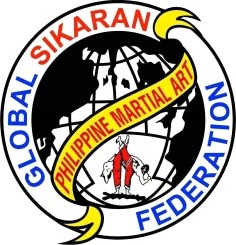
- Sources of information :
Video:
https://www.youtube.com/watch?v=ZXic4z3Pk-0
https://www.youtube.com/watch?v=ISks2_PKZic - Gallery:
- Name of sport (game): Silmabam
- Place of practice (continent, state, nation):
India
- History:
Silambam is a weapon-based martial art of India, more specifically from Tamilakam (now Tamil Nadu region) in the Indian subcontinent, where it originated around 1000 BCE. This ancient fighting style is mentioned in Tamil Sangam literature 400 BCE.
Oral folklore traces Silambam back several thousand years to the siddhar (enlightened sage) Agastya. While on his way to Vellimalai, Agastya discussed Hindu philosophy with an old man he met, said to be the god Murugan in disguise. The old man taught him of kundalini yoga and how to focus prana through the body's nadi (channels). Agastya practiced this method of meditation and eventually compiled three texts on palm leaves based on the god's teachings. One of these texts was the Kampu Sutra (Staff Classic) which was said to record advanced fighting theories in verse. These poems and the art they described were allegedly passed on to other Siddha of the Agastmuni akhara (Agastya school) and eventually formed the basis of Silambam, siddha medicine, and the southern style of kalaripayat.References in the Silappadikkaram and other works of Sangam literature shows that silambam has been practiced as far back as the 4th century BC.The bamboo staff - along with swords, pearls and armor - was in great demand with foreign traders, particularly those from Southeast Asia where silambam greatly influenced many fighting systems. The Indian community of the Malay Peninsula is known to have practiced silambam as far back as the period of Melaka's founding in the 15th century, and likely much earlier.
The soldiers of Kings Puli Thevar, Dheeran Chinnamalai had Silambam army named "thadii pattalam", Veerapandiya Kattabomman and Maruthu Pandiyar (1760–1799) relied mainly on their Silambam prowess in their warfare against the British Army. Indian martial arts suffered a decline after the British colonists banned Silambam along with various other systems. They also introduced modern western military training which favoured fire-arms over traditional weaponry. During this time, Silambam became more common in Southeast Asia than its native India where it was banned by the British rulers. The ban was lifted after India achieved independence. Today, Silambam is the most famous and widely practiced Indian martial art in Malaysia where demonstrations are held for cultural shows.
- Description:
Silambam's main focus is on the bamboo staff. The length of the staff depends on the height of the practitioner. Ideally, it should just touch the forehead about three fingers from the head, typically measuring around 1.68 metres (five and a half feet). Different lengths may be used depending on the situation. For instance, the sedikuchi or 3-foot stick can be easily concealed. Separate practice is needed for staffs of different lengths. Listed below are some of the weapons used in Silambam.
Silambam: staff, preferably made from bamboo, but sometimes also from teak or Indian rose chestnut wood. The staff is immersed in water and strengthened by beating it on the surface of still or running water. It is often tipped with metal rings to prevent the ends from being damaged.
Maru: a thrusting weapon made from deer horns
Aruval: sickle, often paired
Panthukol: staff with balls of fire or weighted chains on each end
Savuku: whip
Vaal: sword, generally curved
Kuttu katai: spiked knuckleduster
Katti: knife
Kattari: native push-dagger with a H-shaped handle. Some are capable of piercing armor. The blade may be straight or wavy.
Surul kaththi: flexible sword
Sedikuchi: cudgel or short stick, often wielded as a pair.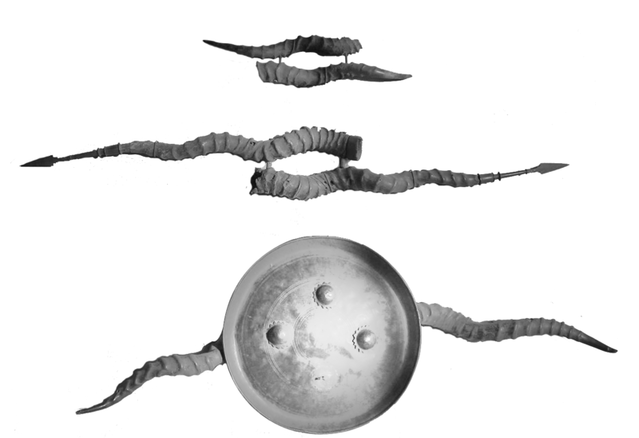
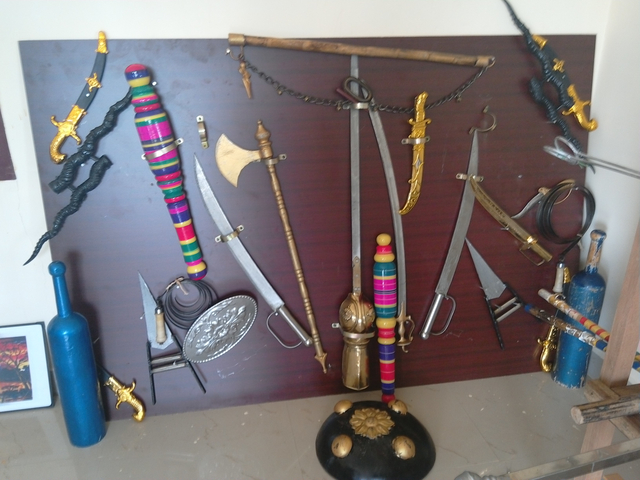
The first stages of Silambam practice are meant to provide a foundation for fighting and to condition the body for the training itself. This includes improving flexibility, agility, hand-eye coordination, kinesthetic awareness, balance, strength, speed, muscular endurance, and cardiovascular stamina.
Beginners are first taught footwork (kaaladi) which they must master before learning spinning techniques and patterns, and methods to change the spins without stopping the motion of the stick. There are sixteen of them among which four are very important. Footwork patterns are the key aspects of Silambam. Traditionally, the masters first teach kaaladi for a long time before proceeding to unarmed combat. Training empty-handed allows the practitioner to get a feel of Silambam stick movements using their bare hands, that is, fighters have a preliminary training with bare hands before going to the stick.
Gradually, fighters study footwork to move precisely in conjunction with the stick movements. In Silambam, kaaladi is the key to deriving power for attacks. It teaches how to advance and retreat, to get within range of the opponent without lowering one's defence, aids in hitting and blocking, and it strengthens the body immensely enabling the fighter to receive non-lethal blows and still continue the battle. The whole body is used to create power.
In the main stance, the staff is held at one end, right hand close to the back, left hand about 40 centimetres (16 inches) away. This position allows a wide array of stick and body movements, including complex attacks and blocks. When the student reaches the final stage, the staff gets sharpened at one end. In real combat the tips may be poisoned. The ultimate goal of the training is to defend against multiple armed opponents.
Silambam prefers the hammer grip with the main hand facing down behind the weak hand which faces up. The strong hand grips the stick about a distance hand's width and thumb's length from the end of the stick and the weak hand is a thumb's length away from the strong hand. The weak hand only touches the stick and to guide its movement. Silambam stresses ambidexterity and besides the preferred hammer grip there are other ways of gripping the staff. Because of the way the stick is held and its relatively thin diameter, blows to the groin are very frequent and difficult to block. Besides the hammer grip, Silambam uses the poker grip and ice pick grip as well. Some blocks and hits are performed using the poker grip. The ice pick grip is used in single hand attacks. The staff is held like a walking stick and just hand gets inverted using the wrist.
Kattari
In battle, a fighter holds the stick in front of their body stretching the arms three-quarters full. From there, they can initiate all attacks with only a movement of the wrist. In fact, most Silambam moves are derived from wrist movement, making it a key component of the art. The blow gets speed from the wrist and power from the body through kaaladi. Since the stick is held in front, strikes are telegraphic, that is, the fighter does not hide their intentions from the opponent. They attack with sheer speed, overwhelming the adversary with a continuous non-stop rain of blows. In Silambam, one blow leads to and aids another. Bluffs may also be used by disguising one attack as another.In addition to the strikes, Silambam also has a variety of locks called poottu. A fighter must always be careful while wielding the stick or they will be grappled and lose the fight. Locks can be used to disable the enemy or simply capture their weapon. Techniques called thirappu are used to counter the locks but these must be executed before being caught in a lock. Silambam also has many different types of avoiding an attack like blocking, parrying, enduring, rotary parrying, hammering, kolluvuthal (attacking and blocking simultaneously) and evasive moves such as sitting or kneeling, moving out, jumping high, etc. Against multiple attackers, silambam exponents do not hold out their sticks as they do in single combat. Instead, they assume one of the numerous animal stances which makes it difficult for opponents to predict the next attack.
An expert of Silambam will be familiar with varma adi or marma adi (pressure points) and know where to strike anywhere in the body to produce fatal or crippling effects by the least use of power. In one-on-one combat an expert would slide the stick to opponents wrist many times during combat. The opponent may not notice this in the heat of battle until they feel a sudden pain in the wrist and throw the stick automatically without knowing what hit them. When two experts match against each other one may challenge the other that he will hit his big toe. Hitting the big toe can produce crippling effects on the fighter, making them abandon the fight. This is called solli adithal which means "challenging and successfully hitting".
Traditional masters still encourage students to live a "pure" life through daily meditation and abstaining from drinking, smoking, and meat consumption. Students who have completed the training syllabus by learning every form are considered qualified to teach. The time it takes to complete differs from one style to another. For example, the nillaikalakki style requires around seven years of training while other styles may have no articulated syllabus.
- Current status:
Practiced
- Sources of information :
Raj, J. David Manuel, The Origin and the Historical Developlment of Silambam Fencing: An Ancient Self-Defence Sport of India. Oregon: College of Health, Physical Education and Recreation, Univ. of Oregon, 1977
Balambal, V., Studies in the History of the Sangam Age. New Delhi: Kalinga Publications, 1998
Sports Authority of India, Indigenous Games and Martial Arts of India. New Delhi: Sports Authority of India, 1987
Robert Crego, Sports and Games of the 18th and 19th Centuries,. Greenwood Press, 2003 - Gallery:
- Name of sport (game): Sqay
- Place of practice (continent, state, nation):
Pakistan, India, China
- History:
Sqay is a South Asian Martial arts form of sword-fighting originating in Ancient Kashmir. Presently divided with India Pakistan and China.
Folklore traces it to remote antiquity several thousand years ago, as far back as the ancient Kashmiri flood myth. The Shaivite snake-worshipping Naga people are said to have created the art prior to the Indo-Aryan invasions, and it was later patronised by kings. The first written evidence of sqay dates to the Muslim period when Persian writings told of sabre-fighting (shamsherizen) in Kashmir. The word sqay itself is first recorded in this period, and is said to mean "knowledge of war" in Persian. Sqay first began to decline in the colonial period but its popularity suffered more during the post-independence Kashmir conflict. In the 1980s, the sqay Grandmaster Mir Nazir Ahmed feared that the art would go extinct, and so introduced modern types of competition influenced by karate and taekwondo. The subsequent founding of the International Council Of Sqay and the Sqay Federation Of India have allowed the system to be promoted on a national level. It is now taught in twenty seven Indian states as well as Bhutan and Kathmandu, Nepal, Bangladesh, Sri Lanka, Jordan, Syria, Turkey, Azerbaijan, Uzbekistan, Thailand, Iran, Iraq, Georgia.
- Description:
Armed sqay makes use of a curved single-edge sword paired with a shield, or one sword in each hand. Unarmed techniques incorporate kicks, punches, locks and chops. Sqay have different techniques single sword double sword free hand techniques and lessons of both free hand and sword.
Sqay competition typically involves sparring, breaking and preset routines. Competitors use a stick to simulate a sword, paired with a shield. Specifics of the regulations differ slightly between gender and age groups, such as the size of the arena or the duration of a bout.
Under the International Council Of Sqay's rules, the sword (tora or tura) is made of synthetic fibre covered in leather. Depending on age group, it measures 2-2.6 feet long. The sword is paired with a shield (bargula) measuring 9-10 inches in diameter, also covered in leather. The official uniform is blue, sometimes with red or yellow piping, consisting of trousers and a cross-front jacket with a belt around the waist. Chest and head guards are required only for sparring.Sparring (loba) takes place in a 5-6.5 metres square. Matches are divided primarily by age but also by weight. A dre (equal to 3 points) is awarded for well performed mavashi kick (on either side of the headguard). If a maygiri kick is executed effectively on the stomach area, a dha (2 points) is awarded. A yaw (1 point) is awarded if the competitor performs a well timed stick (tora or tura) attack. Using excessive force, even to legal scoring areas, results in a penalty or disqualification.
The arms, legs, head and upper body are all legal targets. Only strikes with the "blade" of the stick and the foot below the ankle are allowed. The eyes, groin, hips, knees and uncovered skin are off-limits. The referee can give penalties at any time for ring-outs (kokoday), dropping the sword or shield, or hitting an area not recognized as a target. A muko (warning, deduction of 1 1/2 points) is given for breaking a rule once, followed by a dasi muko (strong warning, deduction of 3 points) for the second offense and an owaza (disqualification) for the third.
If a competitor manages to gain 9 points, they are immediately declared the winner and the match ends. Otherwise, the contestant with more points wins the match. Each bout is 3–5 minutes long and may be extended by 5–7 minutes in the case of a tie. In the event of a tie at the end of the extended time, a sudden death round is held. In this round, the first competitor to score a point wins the match.The breaking (mathol) of objects is used for both training and demonstration. Any item except glass may be broken, but the most common objects are boards of wood or stone. Competitors are judged on their technique, form, quantity of items broken, and how cleanly the item(s) is broken. Scores are given on a scale of 10. Breaking in competitions is divided into the individual and team categories. The duration given for each individual or team is 3 minutes. In the team category, the group is judged as a whole using the same point method as the individual category.
Forms or khawankay are preset patterns of movements designed to improve muscle memory so the moves can eventually be performed in combat without thinking. Because modern sparring allows only a limited number of basic attacks, the majority of sqay techniques are now only taught through these sequences. In competition, khawankay are demonstrated in a 5-metre square. Competitors are judged on stance, timing and perfection of form. The team category is performed by three practitioners. Khawankay may be done with a single sword or a pair. Techniques are mainly cuts but also include thrusts. In the case of the single-sword, it is alternately held with one or both hands, depending on the move.
- Current status:
Parcticed
- Contacts:
Pakistan Sqay Federation - https://pakistansqayfederation.blogspot.com
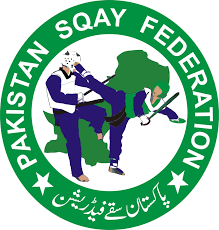
International Council of Sqay - https://www.facebook.com/International-Council-of-SQAY-174556529319770/
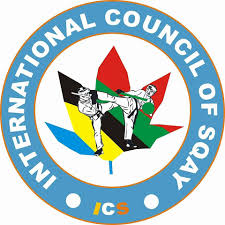
- Sources of information :
Source of photos used in this article and gallery:
https://www.yogems.com/event/64th-national-school-game-sqay-martial-art-championship-2019-01
https://www.dailyexcelsior.com/j-odisha-on-2nd-spot/page14-1-1146/
https://nicelocal.in/nagpur/fitness/sqay_martial_art_club/
https://csam.online/2018/11/11/8-arti-marziali-indiane-scomparse-sqay/ - Gallery:

